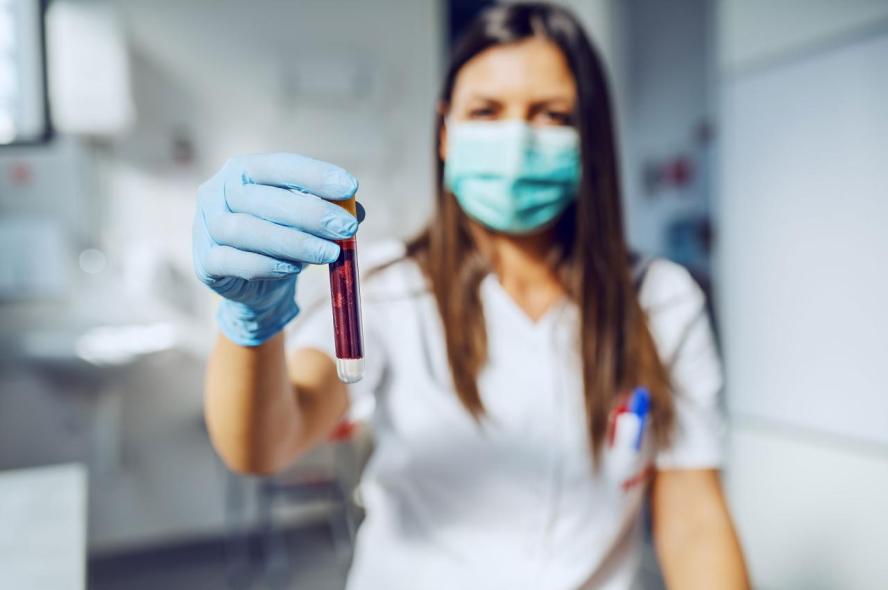-
About
- Departments & Offices
-
Academics
- Public Health
- Biomedical Sciences
- Physician Assistant
- Special Master’s (MBS)
-
Admissions & Financial Aid
- Tuition & Fees
-
Student Experience
-
- Student Resources by Program
- Academic & Student Support
- Wellness & Wellbeing
- Student Life
- Events & Traditions
-
-
Research
- Research Labs & Centers
- Tufts University-Tufts Medicine Research Enterprise
-
Local & Global Engagement
- Global Health Programs
- Community Engagement
What Your Blood Type Can Tell You About Your Health
A hematologist and professor of medicine at Tufts University School of Medicine shares what we know, and don’t know, about how blood types affect our risk of certain diseases

Most people don’t think about their blood type unless they need surgery or are planning to donate blood. But we can learn more from our blood types than simply whether or not we can safely accept a transfusion from a donor. Using large, population-wide surveys, researchers have found that certain blood types are associated with greater risks of heart disease, stroke, and certain cancers, says hematologist Raymond Comenzo, a professor at Tufts University School of Medicine and medical director of the Blood Bank and Transfusion Medicine Laboratory at Tufts Medical Center.
“It’s not the kind of work that can guide clinical decision making for a specific patient,” Comenzo says. “But these linkages can provide avenues for further research to better understand these diseases and the risks for various populations.”
There are four major blood types: A, B, AB, and O. Our blood type is based on specific antigens, which are molecules that stimulate an immune response, that are present on the outside of our red blood cells. A person with B blood, for example, has B antigens on their red blood cells. This means that their body will recognize other B antigens as safe and won’t react to them. But if their body encounters A antigens from, say, transfused blood, it will immediately try to destroy those cells as if they were an infection. People with AB blood have both A and B antigens, and people with O blood have neither.
Blood types are genetic; they stem from variations in one gene in our body known as the ABO gene and they’re not something we can change. But learning how they impact different disease risks can improve our understanding of how and why people develop different health issues.
Cancers. Research shows that people with type A blood are at a higher risk of developing certain stomach cancers. Bacterial infections from helicobacter pylori are more common in patients who have type A blood, and these infections can cause stomach ulcers, inflammations, and sometimes lead to cancer, Comenzo says. H. pylori may also be connected to higher rates of pancreatic cancer in blood types A, B, and AB.
These three blood types may influence the risk of other cancers as well. “For patients who have type A, B, or AB blood, the ABO gene can also play a role in heightening the risk of certain cancers, particularly lung, breast, colorectal, and cervical cancers,” Comenzo says. But researchers still aren’t sure exactly how they are connected.
Heart disease. According to the American Heart Association, A, B, and AB blood types are associated with a greater risk of heart attack due to coronary artery disease than type O blood. In particular, people with AB blood appear to have the highest risk. These blood types have also been linked to higher rates of clotting disorders, which is likely related.
Stroke. A recent study found that people with blood type A were slightly more likely to have a stroke before the age of 60 than people with blood type O. More research is needed to determine what might be causing this connection, but the researchers suggest it might have to do with how different blood types contribute to clotting factors.
Mosquitoes and malaria. In lab experiments, mosquitoes seem to prefer feeding on people with type O blood, although other genetic factors also play a part. Fortunately, having type O blood helps protect people from the most severe effects of malaria, a mosquito-borne disease.
COVID-19. In a large study of European patients, analysis suggested that patients with Type O blood were at a slightly lower risk of dying from COVID-19.
“This was data from before we had vaccines, of course,” Comenzo says. “It doesn’t really translate into risk for an individual patient, because the relative risk is so small.”
Understanding how different blood types may contribute to these risks can help improve how we recognize and manage different diseases at a population level. But individual people shouldn’t suddenly start worrying too much about the particular risks associated with their blood type, Comenzo says. Many of these differences in risk are small, and patients concerned about their health should focus on the risk factors that they can control.
“There are plenty of ways that individuals who have these blood types may minimize their risk,” Comenzo says. “And that’s with exercise, a healthy diet, not smoking, and similar lifestyle changes.”
Department:
Medicine